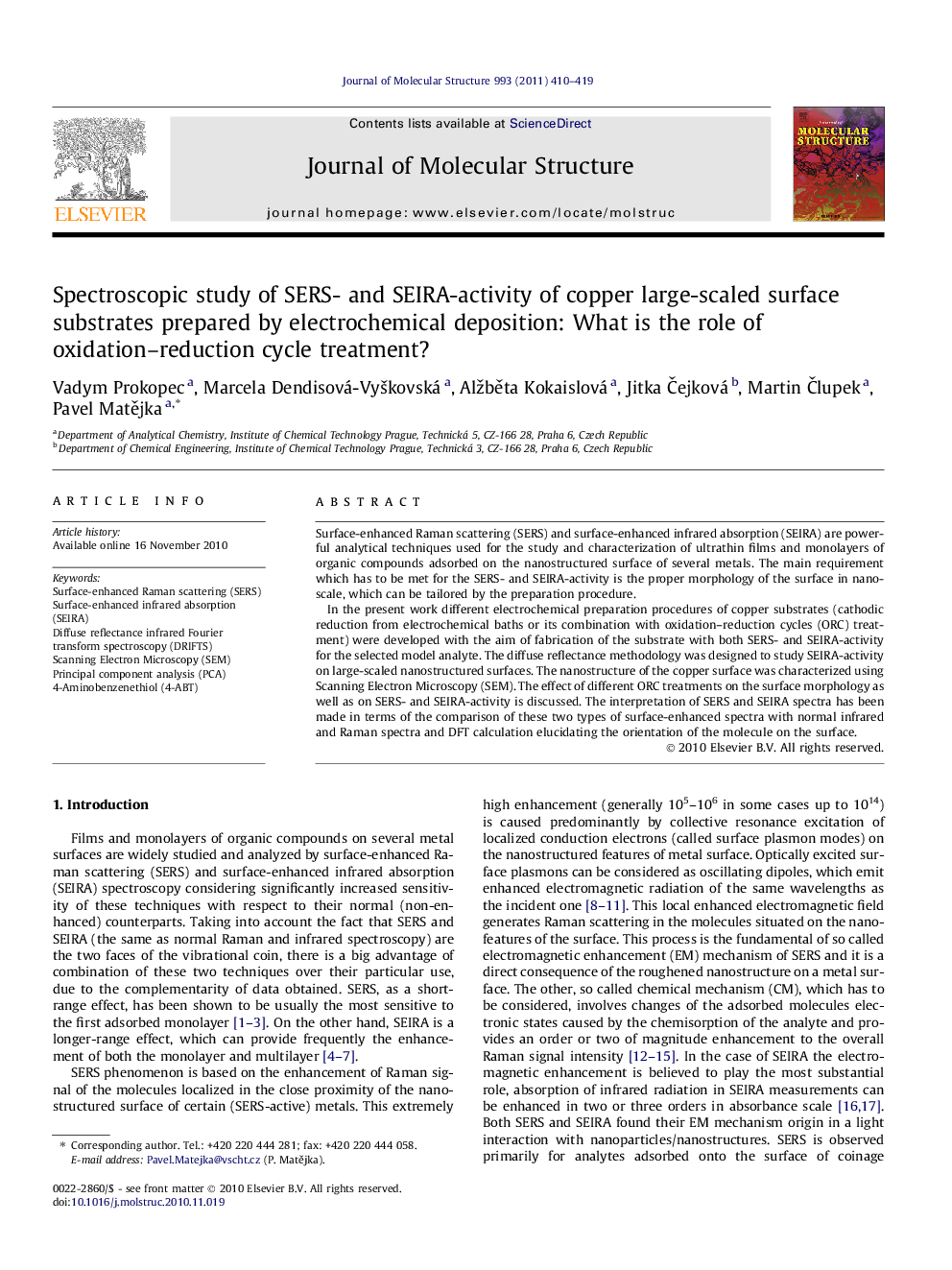| Article ID | Journal | Published Year | Pages | File Type |
|---|---|---|---|---|
| 1406351 | Journal of Molecular Structure | 2011 | 10 Pages |
Surface-enhanced Raman scattering (SERS) and surface-enhanced infrared absorption (SEIRA) are powerful analytical techniques used for the study and characterization of ultrathin films and monolayers of organic compounds adsorbed on the nanostructured surface of several metals. The main requirement which has to be met for the SERS- and SEIRA-activity is the proper morphology of the surface in nanoscale, which can be tailored by the preparation procedure.In the present work different electrochemical preparation procedures of copper substrates (cathodic reduction from electrochemical baths or its combination with oxidation–reduction cycles (ORC) treatment) were developed with the aim of fabrication of the substrate with both SERS- and SEIRA-activity for the selected model analyte. The diffuse reflectance methodology was designed to study SEIRA-activity on large-scaled nanostructured surfaces. The nanostructure of the copper surface was characterized using Scanning Electron Microscopy (SEM). The effect of different ORC treatments on the surface morphology as well as on SERS- and SEIRA-activity is discussed. The interpretation of SERS and SEIRA spectra has been made in terms of the comparison of these two types of surface-enhanced spectra with normal infrared and Raman spectra and DFT calculation elucidating the orientation of the molecule on the surface.
